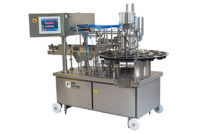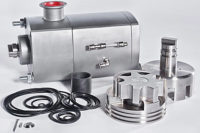Move on
Consider an eccentric disc pump for ice cream processing lines
With supply tanks 220 meters (720 feet) from the ice cream freezers, a Belgian ice cream processor found that powerful eccentric disc pumps solved a problem.

Faced with new recipes that were taxing the efficiency of the centrifugal pumps used in its manufacturing process, ice cream processor Ysco knew that it needed a better pumping solution. It selected the SLS Series Eccentric Disc Pump from Mouvex. Photo courtesy Mouvex, a product brand of PSG, a Dover company

From its production facilities in Langemark, Belgium, and Argentan, France, Ysco annually produces 174 million liters (41.2 million gallons) of ice cream. Photo courtesy Mouvex, a product brand of PSG, a Dover company

When the higher viscosities of the ice cream mixes were becoming incompatible with the operational capabilities of the centrifugal pumps at Ysco, it prompted Krist Levrouw to begin searching for a better solution. Photo courtesy Mouvex, a product brand of PSG, a Dover company

The design of the Mouvex eccentric disc pumps has approvals from EC 1935/2004, 3-A SSI, The U.S. Food and Drug Administration and EHEDG for use in food-processing applications. Photo courtesy Mouvex, a product brand of PSG, a Dover company

